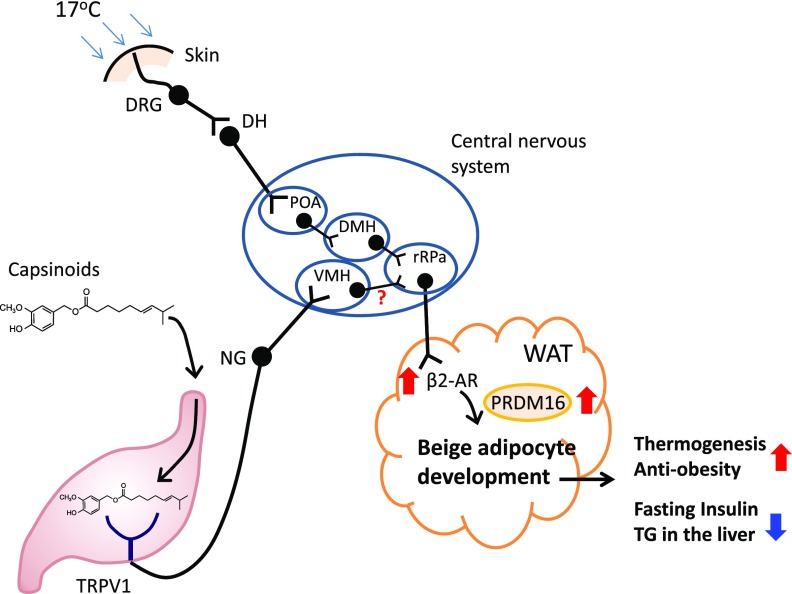Figure 6.
Proposed mechanisms by which capsinoids and mild cold temperature promote beige adipocyte biogenesis and energy expenditure. Capsinoids bind to TRPV1 in gut. The signal is transmitted to the CNS through vagal nerves that project into the VMH. The signal is subsequently transmitted to subcutaneous WAT depots through the β2-AR in inguinal WAT. Capsinoids increase the expression of β2-AR. However, cold is sensed by skin and transmitted to the somatosensory nerves through second-order thermal sensory neurons in the dorsal horn (DH). These neurons activate the signal to the preoptic area (POA) where gabanergic neurons control the outputs to the neurons at the dorsomedial nucleus of the hypothalamus (DMH) and subsequently in the rRPa nucleus. These stimuli synergistically promote beige adipocyte biogenesis through stabilizing PRDM16 protein in inguinal WAT, leading to an increase in whole-body energy expenditure and a decrease in fasting insulin levels and hepatic TG content. DRG, dorsal root ganglion; NG, nodose ganglion.

